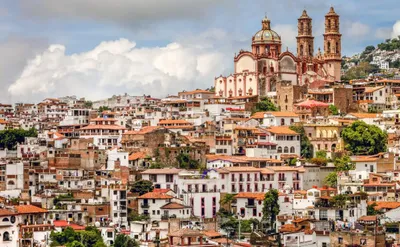
Taxco, Guerrero: The Ultimate Guide to Mexico’s Silver City
Welcome to Taxco Mexico, a charming colonial town nestled in the hills of Guerrero state.
In this travel guide, I’ll provide all the information you need to plan an unforgettable trip to Taxco, including tips on the best things to see and do, where to eat and stay, and how to get around.
Taxco is famous for its silver mining history, stunning architecture, and vibrant cultural scene, making it an ideal destination for travelers seeking a taste of authentic Mexican culture.
Whether you’re interested in exploring historic landmarks, trying traditional cuisine, or shopping for unique souvenirs, Taxco has something to offer.
So pack your bags, grab your camera, and get ready to discover the magic of Taxco!
Where is Taxco, Mexico?
To get to Taxco, you can fly into Mexico City and take a ground transportation option (about 3.5 hours) such as a shuttle bus, private taxi, or rent a car.
Another option is to fly into the Zihuatanejo International Airport and complete the journey by road to Taxco (about seven hours).
About Taxco, Mexico
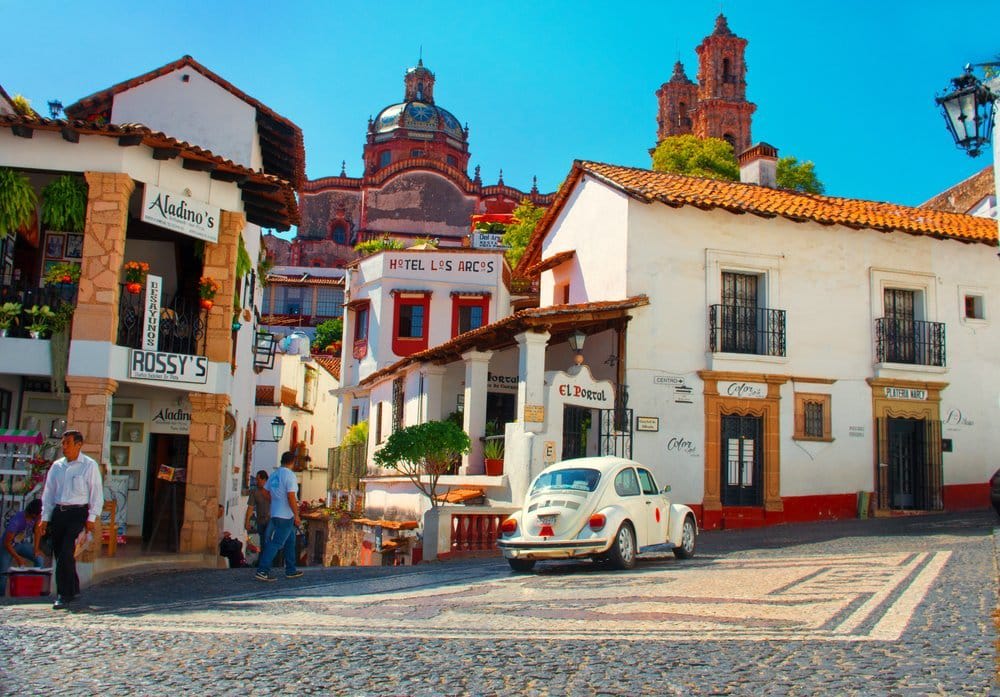
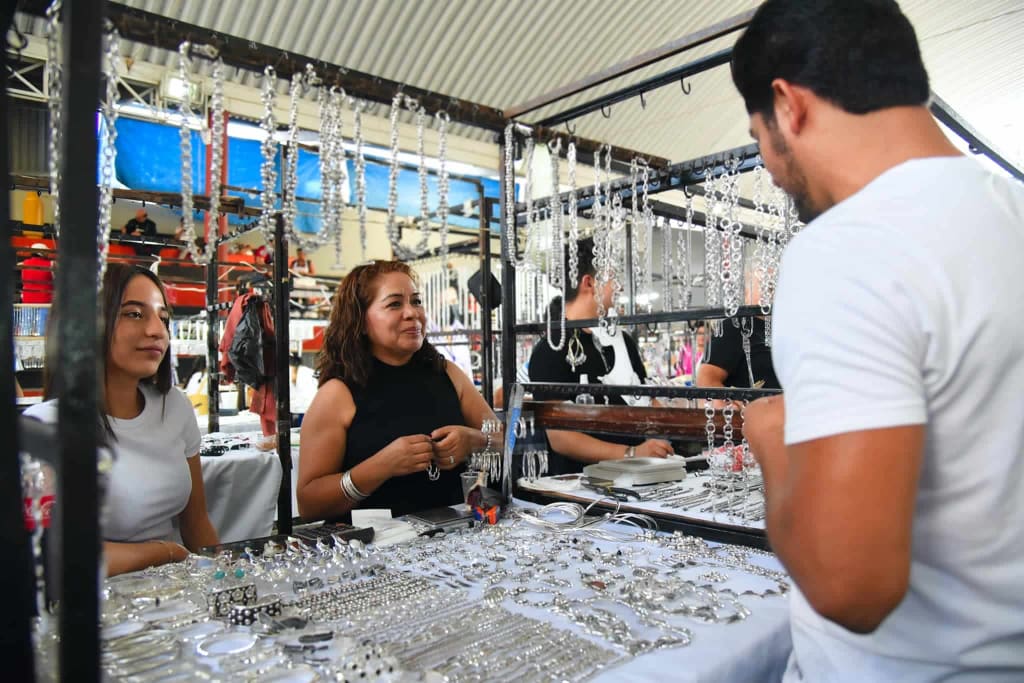
The origin of Taxco and its immense wealth is due, as in other Mexican cities such as Guanajuato and Zacatecas, to the existence of silver mines nearby.
Therefore, Taxco can be included in the Silver Route, which comprises some of the most beautiful cities that had their heyday in the Viceregal era.
Also, the iconic church of Santa Prisca (the most important in the city) and its surroundings have been included since 2001 in the tentative list of Unesco World Heritage.
Taxco’s boom is closely related to silver, but it is a very peculiar story that unfolds in three different stages.
Some claim that Taxco silver mines were the first to be exploited in North America.
In 1531 the first facilities were built, but after a few years, the vein was exhausted, and the place was practically abandoned.
Jose de la Borda
The stage of true splendor came two centuries later, in 1743, and is closely related to a fundamental character in the city’s history: José de la Borda.
It is said that he discovered a very rich silver vein by accident and that his experience as a miner led him to introduce significant technical improvements in the process.
He was also the owner of mines in Zacatecas, making him the richest man in New Spain.
Eventually, those sources ran out and Taxco became the main silver producer.
The third stage of Taxco’s history began in 1929 with the arrival of William Spratling (whom everyone calls Guillermo), who opened a workshop to create silver jewelry with designs inspired by pre-Hispanic motifs.
His apprentices, in turn, established their workshops, which is why today, Taxco is one of the best places in Mexico to buy silver jewelry, both for the quality of the work and the beauty of the designs.
Top 7 things to see in Taxco, Mexico

One of the pleasures of Taxco is to stroll aimlessly through the narrow streets that open up around the church of Santa Prisca, continually encountering splendid mansions and picturesque corners.
Keep in mind that the city is located on a very steep hillside, so many of the streets, which are cobblestone, are on a slope; sturdy and comfortable shoes are the essential element for a visit to Taxco.
1. Church of Santa Prisca in Taxco’s Borda Square

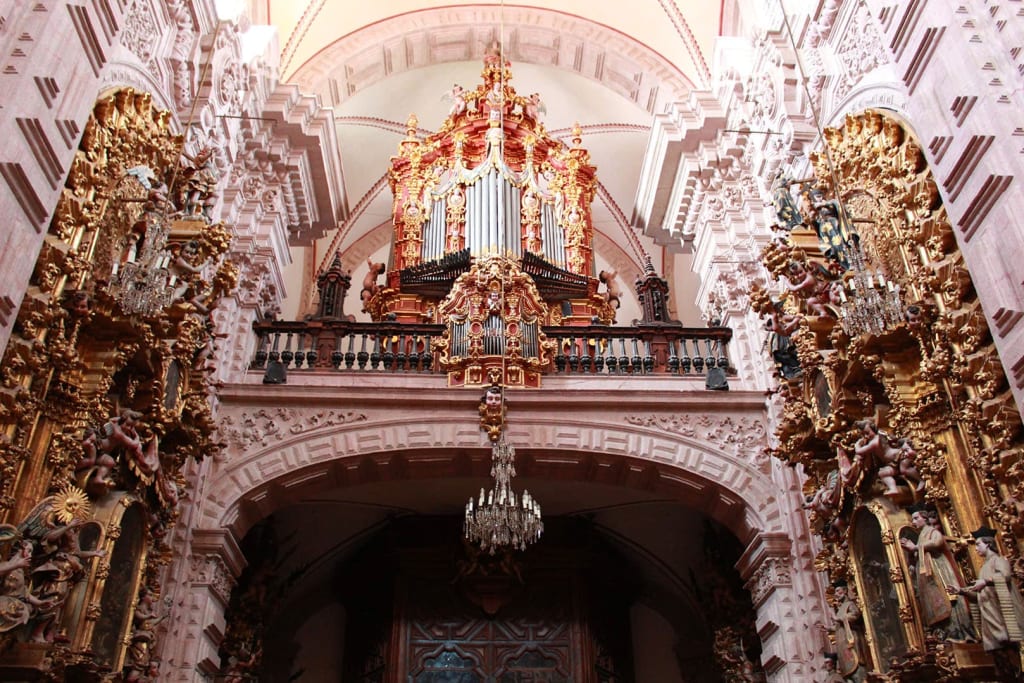
Any tour of Taxco likely begins in the Zocalo, also known as Plaza Borda, where Santa Prisca temple majestically stands.
The first thing that strikes you about the church is the towers’ height, an impression reinforced by the relative narrowness of its single nave.
Its narrowness is because of the slope of the land and therefore there was no room to build a church of greater dimensions.
This temple was a gift from José de Borda to the city as an offering to God for the prosperity of its mines, so it is a tribute to his religious zeal.
To accomplish this, he hired the best artists and architects, who completed the work in seven years.
The church of Santa Prisca is built in pink stone that shines magnificently in daylight.
Much of its beauty is due to the unity achieved by all the elements despite their diversity, be it the Churrigueresque altars, furniture, sculptures, paintings, and stone.
One of the most beautiful details is the fabulous relief that occupies the facade and represents the baptism of Jesus Christ.
It is no exaggeration to say that it is one of the most important baroque works of art in the world.
2. Borda House cafe
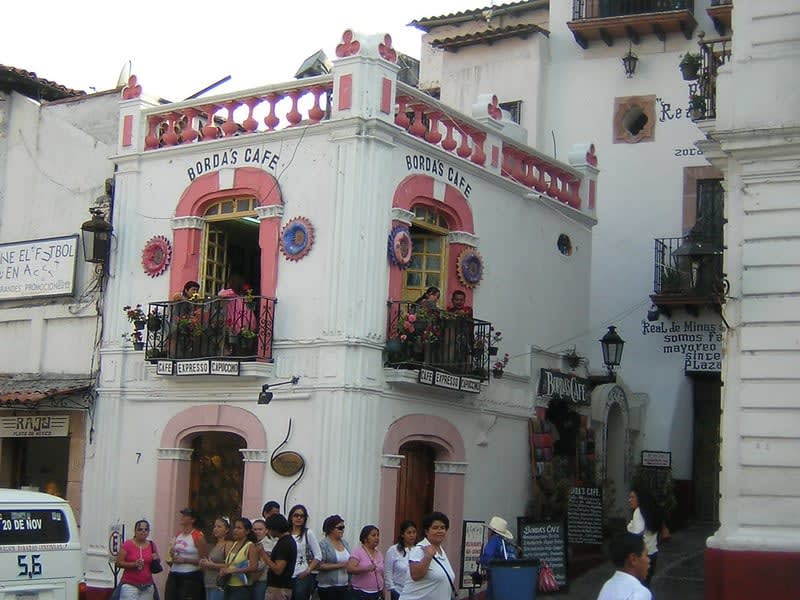
At the time of Santa Prisca, most of the relevant buildings of the city were built.
One of the most outstanding is the Casa Borda cafe, which now functions as a cultural center.
A curious detail is how it adapts to the terrain, since the street that leaves the Zócalo, to which its main facade overlooks, undertakes a very steep descent, and that is why the back of the building is four stories higher than the front.
3. Museum of Viceroyal Art
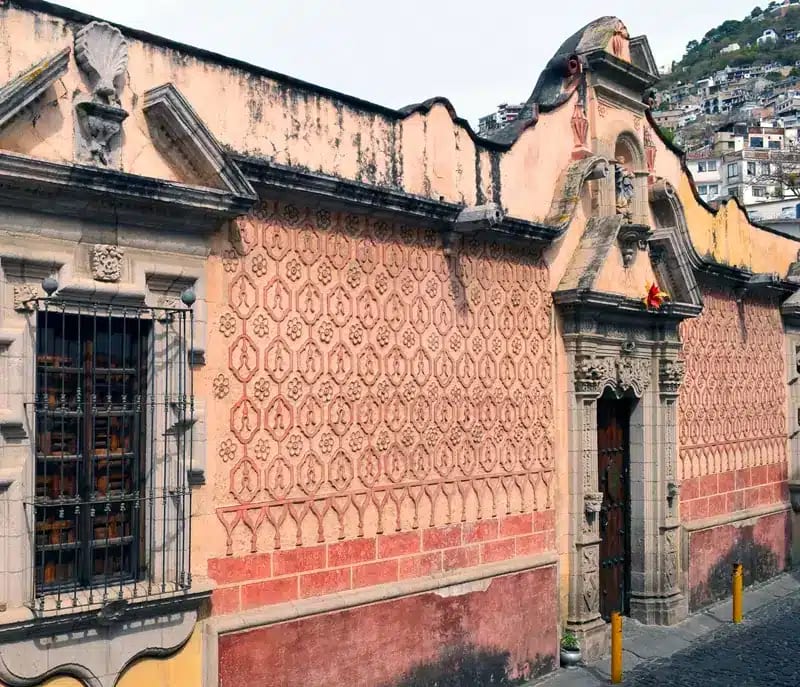
Another important building is the Casa Humboldt, so-called because the German naturalist spent a night there.
It is now the home of the Museo de Arte Virreinal, which houses some works hidden in the basements of the church.
4. Guillermo Spratling Museum
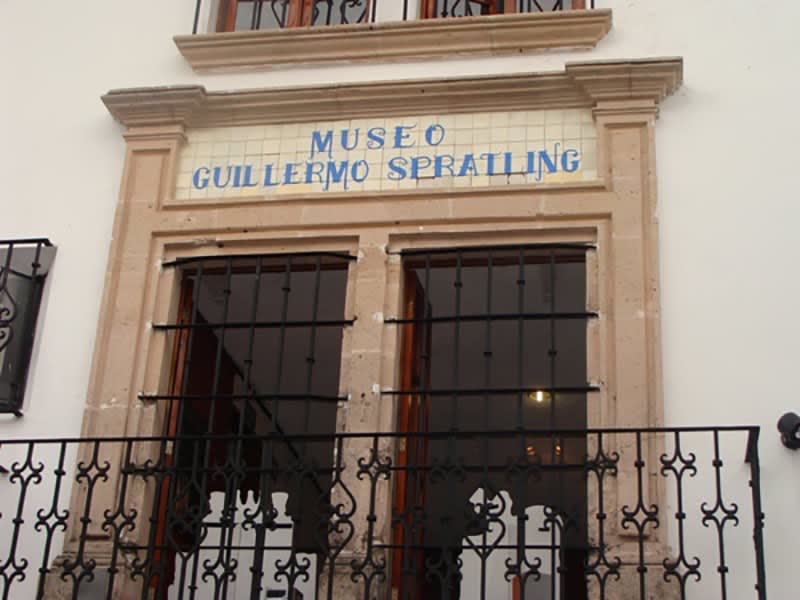
To understand the history of Taxco, you must also visit the Guillermo Spratling Museum, which houses the collection of pre-Hispanic art and a sample of the silversmith’s jewelry designs.
5. Ex-convent of San Bernardino de Siena in Taxco Guerrero

Although it pales compared to Santa Prisca, it is interesting to approach the ex-convent of San Bernardino de Siena, probably the oldest in Taxco.
The convent’s back is a sculptural group of three figures dedicated to the cross, the penitent, and the soul, fundamental characters of Taxco’s Holy Week.
From the area of the old convent, you have a good view of Santa Prisca, and you can appreciate the contrast between the towers completely covered with reliefs and the rest of the temple, much more straightforward.
6. Stroll Taxco’s streets
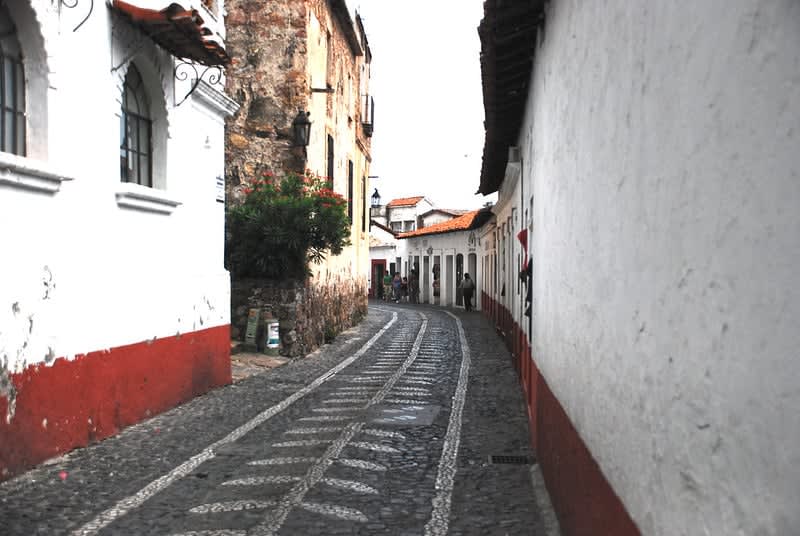
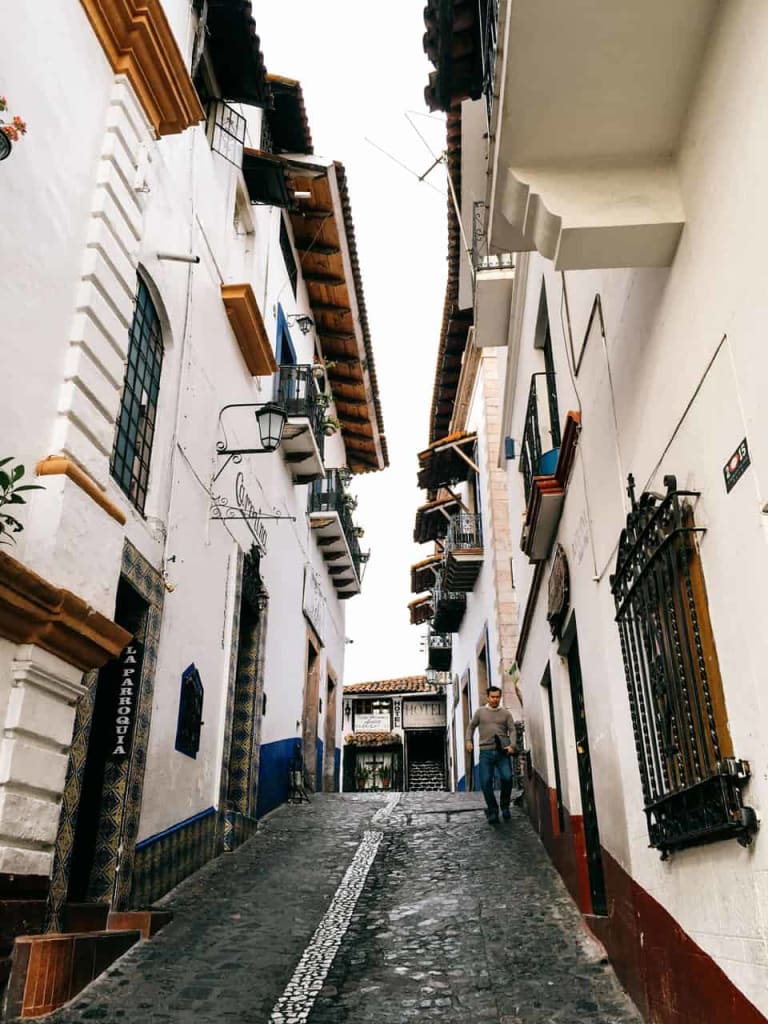
In any case, one of the main attractions of Taxco is to walk through its old cobblestone streets and observe the atmosphere, full of food and craft vendors, as well as the surprises of finding small squares or funny corners.
Another characteristic of Taxco is the great abundance of cabs, usually old models of the Volkswagen Beetle, small vehicles that adapt very well to the narrow sloping streets.
Most streets are one-way, but in some, it is two-way, and it is curious to see how the cars cross each other in the curves on the slopes where there is hardly any visibility.
7. Admire the viewpoint of Cristo Monumental in Taxco

The urban development of Taxco means that there are numerous viewpoints over the city and the surrounding area.
One option to enjoy an excellent panoramic view is to use the cable car that leaves from the ex-Hacienda del Chorrillo and arrives at the Montetaxco hotel.
This old hacienda is one of the oldest buildings in the city since it was used during the mining exploitation of the 16th century.
However, the best viewpoint of Taxco that we know of is that of the Monumental Christ, which is located on the hill of “Atache.”
When the public lighting is turned on at dusk, all of Taxco shines, and one would almost say that it is not a mountain of silver, but of gold.
To get there, there are minibusses, although the most practical way is to take a cab.
From the lookout point, you can see the whole city, with the temple of Santa Prisca dominating the view.
Taxco Guerrero: Gastronomy
Taxco’s gastronomy is characterized by the exotic ingredients that make up its dishes.
This characteristic comes from its deep-rooted tradition for the pre-Columbian and the local.
That is to say that in this cuisine, you can enjoy everything from the delicious jumiles to iguana meat.
However, there is also a strong Spanish influence, noticeable in the recipes of the first friars who arrived here.
The gastronomy of Taxco is exceptionally familiar, based on traditional recipes passed down for generations.
Where to eat?
The Magical Town of Taxco Guerrero has a range of restaurants to enjoy local delicacies.
But it is also a must to visit the Tetitlán market, located very close to the city’s main square.
You will find the most exquisite dishes in the region at very affordable prices in the food section.
So if you visit the city or recommend the typical dishes of Taxco, pay attention to the following list.
4 Typical dishes of Taxco, Mexico
1. Mole Rosa, the flagship of Taxco’s gastronomy

This chromatic variant of the traditional mole is typical and emblematic of Taxco’s gastronomy.
The broth in which this mole is prepared contains chicken; some even add pulque, hierba santa, onion, garlic, beet, cinnamon, and aniseed.
On the other hand, the chicken is stuffed with onion, garlic, corn, chipotle chiles, butter, salt, and pepper.
The mole version contains chopped onion, garlic, mezcal, almonds, pine nuts, peanuts, sesame seeds, herbs, pulque, cloves, cumin, chipotle chiles, and chocolate.
It is usually served garnished with pine nuts and can be eaten on the rooftops of this Magical Town’s restaurants.
2. Jumiles, the pre-Hispanic side of Taxco’s gastronomy
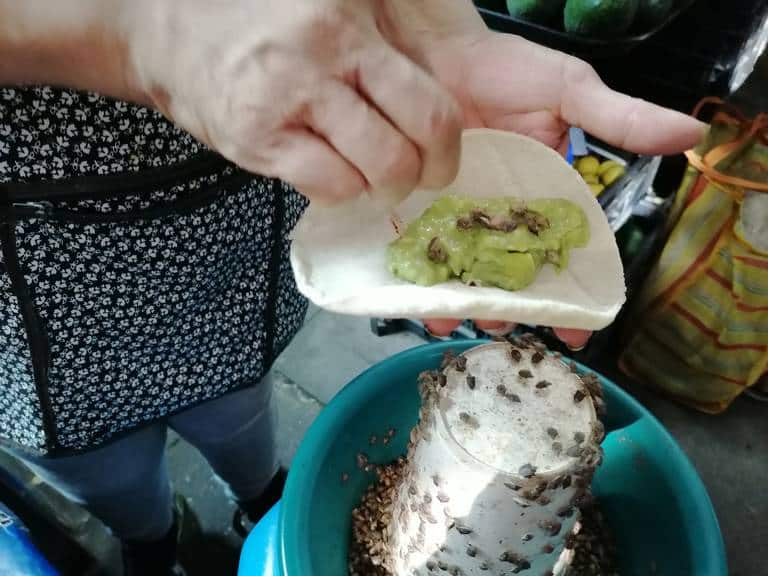
Of pre-Columbian heritage, jumiles are one of Taxco’s typical dishes.
They are exotic but tasty insects that can be eaten in different ways.
It is a peculiar ingredient rich in protein.
It can be seen in seasoned caldillos (broths), mole, ground in sauce with tomato, or simply in a freshly made tortilla.
This is one of the “delicacies” that attract tourists the most, representing Taxco’s gastronomy.
However, for the locals, these little insects have a significant meaning.
So much so that a temple has been dedicated to them at the top of Cerro del Huixteco, the highest mountain in Taxco.
The season of jumiles goes from October to January, in which the famous “jumil sauce” and “mole with jumiles” cannot be missed.
3. Iguana, a typical ingredient
Another pre-Hispanic ingredient that has survived until now is iguana meat. Although it is less used than before, it is still a typical food.
It will indeed be a challenge to dare to try the peculiar meat of this reptile for some people. However, several typical Taxco dishes can be prepared from the iguana.
One of the most popular is perhaps tamales and mole.
4. Guerrero style Pozole
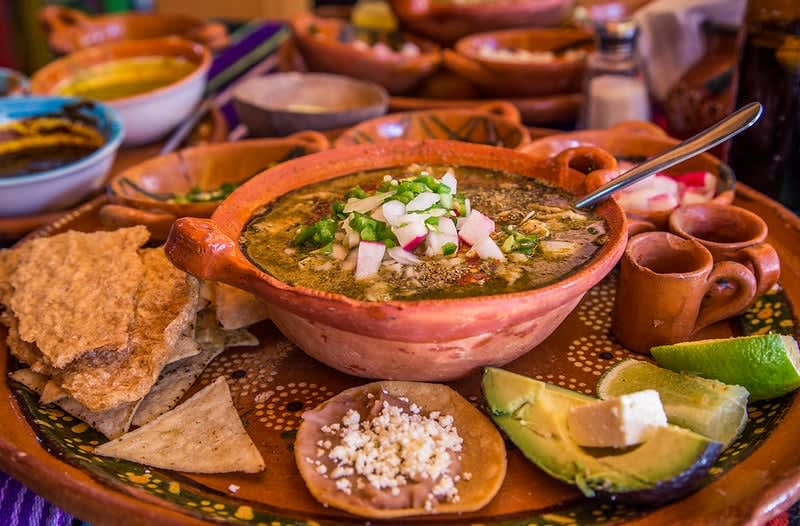
Although it is a typical state dish, pozole guerrerense has unique roots in Taxco. It is a soup prepared with corn, meat, and chili, very popular nationwide.
It is served with a garnish of tostadas, avocado, chicharrón (pork rinds), and crispy golden potato taquitos.
Although it is prepared any day of the week, restaurateurs promote the popular “Thursday pozolero.”
This tradition dates back to the 40s when the cooks prepared white pozole on Wednesdays.
But since they had so much leftover, they added green sauce the next day.
Undoubtedly, pozole is one of the tastiest Mexican dishes already part of Taxco’s culinary traditions.
Try the local bread
There are few bakeries in this Magical Town of Guerrero.
The “pichones” and “tornillos,” or the “teleras,” are not just delicious but enormous! I highly recommend the local bakeries here. It’s insane!
Bertas, the typical cocktail of Taxco Guerrero
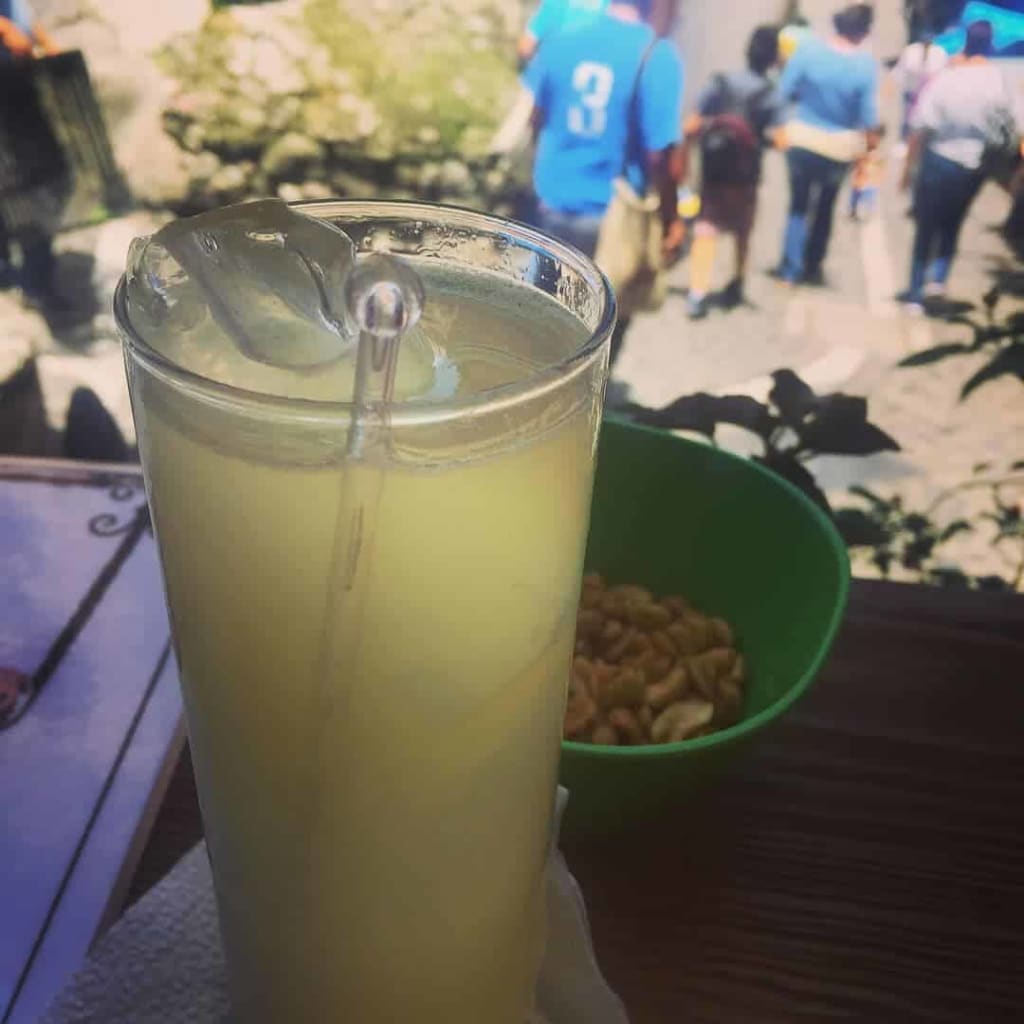
The famous “Bertas” is the most symbolic drink of Taxco.
It is prepared with tequila, honey, lemon, and mineral water, and served in a tall glass with crushed ice.
Young pechuga mezcal or mezcal liqueur sweetened with almonds or cinnamon is customary.
Taxco, Mexico: Final thoughts
Taxco, Guerrero, is more than just a picturesque colonial town; it’s a destination brimming with history, culture, and unmatched artisanal craftsmanship.
From its storied silver mining heritage to its stunning architecture and vibrant local markets, Taxco offers a unique blend of old-world charm and modern-day allure.
Whether you’re exploring the winding cobblestone streets, marveling at the exquisite silver jewelry, or taking in the panoramic views from the Cristo Monumental, Taxco promises an unforgettable experience.
So prepare to discover the magic of Mexico’s Silver City—your adventure awaits!